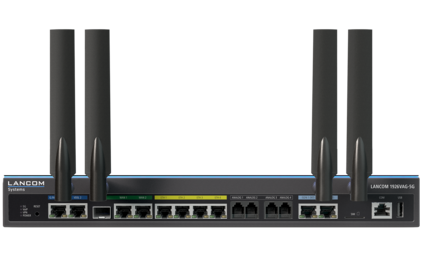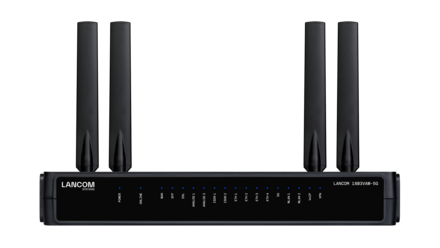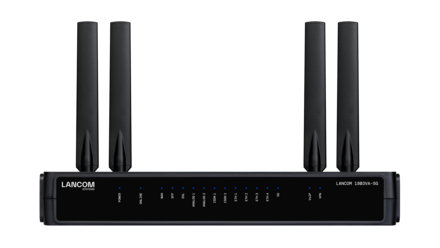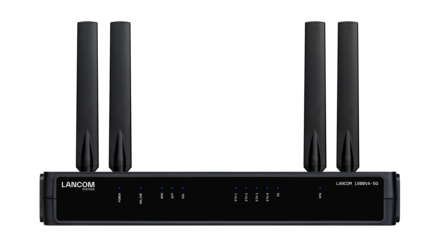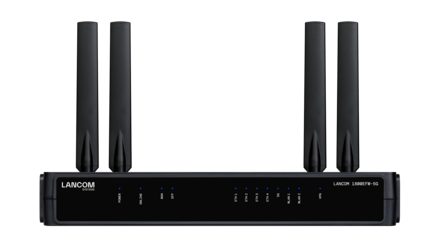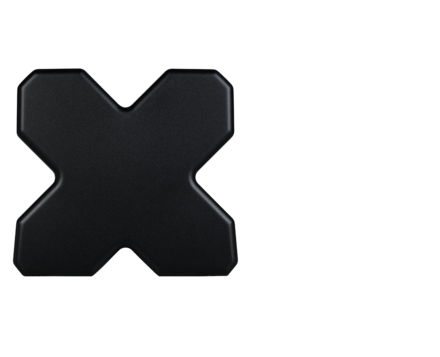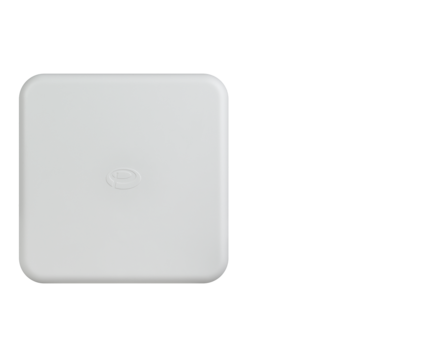The 5G standard is the fifth generation in mobile communications with the radio interface New Radio (NR). The technology has been steadily expanded since 2019 and is the forward-looking successor to 4G (LTE). 5G sets new standards and ensures high-performance use of real-time applications such as video streaming or augmented reality through the highest availability and best bandwidths. With currently unsurpassed speed at lowest latencies, the 5G standard is ideal for environments with a high user density.

In cellular radio, high-frequency electromagnetic waves transport data packets from the antennas or radio cells to the receivers. The frequency describes the number of these waves per second. The bandwidth, on the other hand, provides information about the available interval width within a frequency spectrum.
The lower the frequency, the greater the range or cell size that can be achieved. However, data throughput is highly limited in this lower frequency band due to the small number of free channel bandwidths. Such a network is therefore suitable for coverage in extensive areas with lower data throughput requirements.

The opposite is true for networks that cater to a high user density: By using higher frequencies, larger channel bandwidths are available, enabling faster transmission of large amounts of data and thus improving performance. In addition to large mobile communications antennas, small cells are also used as base stations to compensate for the shorter radio wave range. The higher frequencies reserved exclusively for 5G are therefore mainly suitable for operation in cities and other conurbations.
Read more about this in our Whitepaper: 5G – Mobile Communications of the Future.

Wider frequency ranges
The broad spectrum of 5G—divided into two frequency ranges—exploits the advantages of both short-wave and long-wave radio waves. Analogous to the previous standards, frequencies with a long range between 700 MHz and 2.6 GHz, so-called centimeter waves, are therefore used for 5G. In addition, the frequency band from 3.4 to 3.8 GHz has been available…

Higher speeds
In contrast to previous standards, the increased bandwidth efficiency of 5G enables significantly faster uploads and downloads at theoretically double-digit Gigabit speeds*. Compared from 4G (LTE) to 5G, much faster loading times can be achieved in any case. Frequency or channel bundling, which is also used for LTE-A ("Advanced"), ensures the use of a larger…

Lower latencies
Real-time transmission is no longer a future scenario with 5G: With only a few milliseconds to less than one millisecond, 5G ensures minimal time delays (latencies) in data transmission. Using the 5G standard thus saves energy and achieves higher efficiency per transmitted data volume compared to older standards.
More stable capacity
High-performance 5G cells can simultaneously serve more mobile receivers more precisely and faster than 4G antennas despite shorter range. The so-called small cells further condense existing antenna sites when demand is particularly high, in order to increase network capacity and reliably prevent network congestion at major events or in train…

Simplest upgrade
In the first phase of the mobile switchover, the backward-compatible 5G standard will be operated in the non-standalone network (5G NSA). To achieve this, the 5G standard simply uses the existing 4G infrastructure as a technical basis to initially carry out the 5G rollout quickly, easily, and cost-effectively. Thus, by means of Dynamic Spectrum Sharing (DSS)…

Full power by stand-alone operation
To take advantage of the full 5G feature set, the industry is aiming for stand-alone operation (5G SA) – that means: stand-alone 5G network transformation with complete decoupling of the "4G base." With an independent 5G core network, users benefit from even lower latencies, which, in addition to the advantage of near-live communication, also pays off in…
How secure is 5G?
The fifth generation in mobile communications ensures maximum reliability: linear block codes, so-called LDPC codes (low-density parity check codes), are used among others to protect against transmission errors and for error correction. If error-free decoding is not possible at the receiver, retransmission via HARQ (Hybrid Automated Repeat ReQuest) ensures reliable data transmission. But 5G also offers greater security for the user's own data than older standards: The international mobile subscriber identity (IMSI), which means the unique identification via SIM card, is transmitted to the network operator in encrypted form for the first time with 5G.
Applications
Thanks to its high performance, the 5G standard offers a wide range of applications that can be implemented with LANCOM solutions.
Primary access and load balancing
Unlike 4G, 5G is not only suitable for backup scenarios: Thanks to its low latencies and very high throughput rates, the use of 5G also makes sense for load distribution and bandwidth expansion in the network (load balancing) or as consistent and always available primary access for branch offices or remote employees.
Temporary access and mobile deployment
The faster and more flexible provision of 5G Internet compared with wired Internet connections also makes 5G interesting for time-limited use in temporary stores (pop-up stores) or construction sites. Stationary broadband connections based on 5G offer data rates in the Gigabit range, even without the costly installation of physical Internet lines.
Campus networks with Private 5G
Large company sites can hardly be covered efficiently with Wi-Fi over a wide area. Here, closed mobile networks, so-called campus networks, with their own 5G infrastructure are a suitable extension. This "Private 5G" guarantees private access with maximum capacity, availability, and data security for business-critical data traffic.
Outlook
Even though area-wide use of 5G is not expected to be possible in Germany until 2025, research has been underway since 2017 on the successor standard 6G.
By using even higher frequency ranges with data rates in the terabit range, this is intended to provide an even faster and ubiquitous user experience with latencies in the microsecond range. By way of comparison, 6G latency would then correspond to one thousandth of the 5G delay. So the dynamic mobile communications market will continue to provide exciting developments with potential for enormous performance increases in the future.



